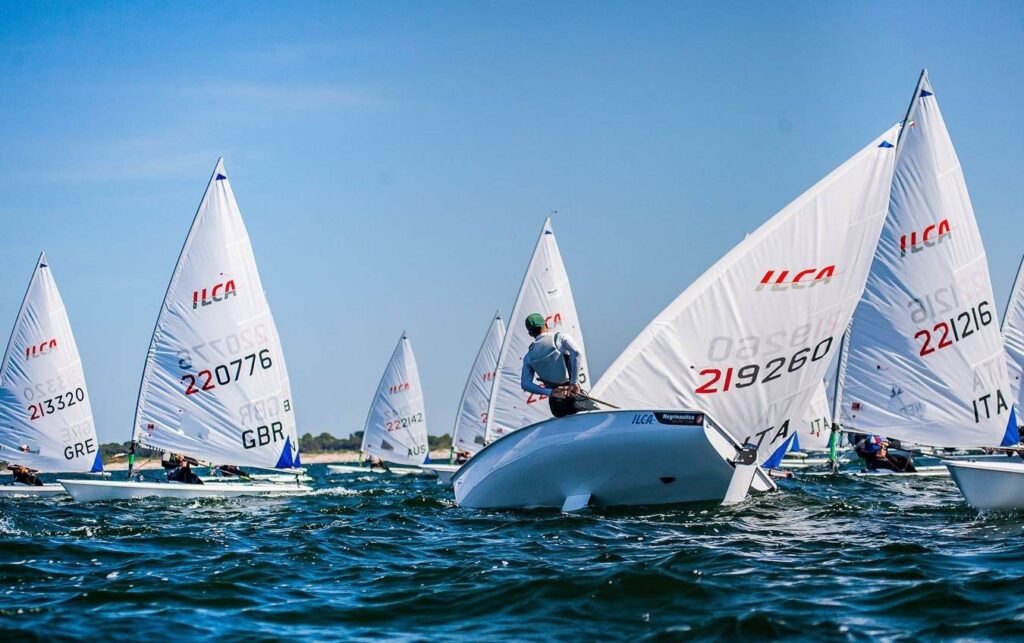How Does Sailing Work? The Physics of Sailing
Sailing, with its graceful boats skimming across the water powered solely by the wind, is a captivating and ancient mode of transportation and recreation. While it might seem like magic, the principles behind sailing are firmly grounded in physics. The interplay between the wind, the water, and the structure of the sailboat creates an intricate dance of forces that propels the vessel forward. In this article, we will delve into the physics of sailing to uncover the mechanics behind this age-old practice.
The Role of the Wind: Lift and Drag
At the heart of sailing lies the wind – a dynamic force that fills the sails and provides the energy needed to move the boat. The interaction between the wind and the sail is based on the principles of lift and drag, which are also fundamental to aviation and other fluid dynamics.
When wind flows over the curved surface of a sail, it creates an area of lower pressure on the windward side and an area of higher pressure on the leeward side. This pressure difference generates lift, much like an airplane wing. The sail’s shape and angle in relation to the wind determine the amount of lift generated. By adjusting the sail’s angle, sailors can control the lift and subsequently the boat’s direction.
Drag, on the other hand, is the resistance the sail experiences due to the friction between the air molecules and the sail’s surface. While drag can’t be entirely eliminated, modern sail designs aim to minimize it to ensure the boat moves efficiently through the water.
>>Also Read: How Fast Can a Sailboat Go?
The Concept of Apparent Wind
In a straightforward scenario, a sailboat would travel directly downwind with the wind pushing the sails from behind. However, sailing often involves moving at angles to the wind, a concept that introduces the notion of apparent wind.
Apparent wind is the combination of the true wind – the wind blowing over the Earth’s surface – and the wind generated by the boat’s motion through the water. As the boat sails at an angle to the true wind, the wind experienced by the boat appears to come from a different direction and at a higher speed than the true wind. This apparent wind is crucial for maintaining lift on the sails, even when sailing against the true wind direction.

Points of Sail: Navigating the Wind Angles
To understand how sailboats maneuver, it’s essential to grasp the concept of points of sail. These are specific angles at which a boat can sail relative to the wind direction. The main points of sail are:
- Close-hauled: Sailing as closely as possible into the wind. This requires the sails to be trimmed in tightly, and the boat moves forward at an angle against the wind.
- Close reach: Sailing diagonally to the wind, between close-hauled and a beam reach.
- Beam reach: Sailing perpendicular to the wind. This is often the fastest point of sail as the boat can fully capture the wind’s energy.
- Broad reach: Sailing diagonally away from the wind, between a beam reach and running.
- Running: Sailing directly downwind, with the wind coming from behind the boat.
By adjusting the angle of the sails and the boat’s course, sailors can optimize their speed and direction according to the prevailing wind conditions.
>>Also Read: Points of Sail Explained
Balancing Forces: The Keel and Centerboard
While the wind provides the forward propulsion, the boat’s stability and ability to maintain a straight course are maintained through the use of a keel or centerboard, depending on the type of sailboat.
The keel is a heavy, fin-like structure located beneath the boat’s hull. It serves two main purposes: counteracting the force of the wind pushing the boat sideways (referred to as leeway) and providing ballast to keep the boat upright. The keel’s shape generates lift in the water that counters the lateral force of the wind, allowing the boat to sail closer to the wind without being pushed sideways.
For boats with a centerboard, which is a retractable fin located in the center of the boat, the principle is similar. By adjusting the centerboard’s depth, sailors can control the boat’s lateral resistance and stability.
>>Also Read: How do Sailboats Move Without Wind?
Tacking and Jibing: Changing Course with the Wind
Sailing isn’t just about going in a straight line – sailboats can change direction by tacking and jibing.
Tacking involves turning the boat’s bow through the wind so that the wind changes from one side of the boat to the other. This maneuver allows the boat to change direction while maintaining forward momentum. During a tack, the sails are let out to spill the wind’s energy, the bow crosses through the wind, and then the sails are trimmed in again on the new tack.
Jibing, on the other hand, is a maneuver where the stern of the boat crosses through the wind. This is often used when sailing downwind. Jibing requires careful coordination, as the sails can swing abruptly from one side to the other, potentially causing powerful forces.

Sail Shape and Rigging: Aerodynamics of Sailing
The shape of the sail and the configuration of the rigging also play a vital role in the physics of sailing. Modern sail designs use a combination of materials and engineering to create sails that are both efficient and durable.
The angle at which the sail is set, known as the angle of attack, determines the amount of lift and drag produced. Sails are typically designed with a curved shape, known as camber, which allows for better lift generation and minimizes drag. Adjustable controls such as the cunningham, outhaul, and boom vang enable sailors to modify the shape of the sail according to wind conditions.
The mast, rigging, and other structural elements of the sailboat are designed to distribute forces evenly and provide stability. The tension in the rigging affects the shape of the mast, which, in turn, affects the shape of the sail. Balancing these factors ensures optimal sail performance and boat stability.
>>Also Read: Most Common Sailing Terms
How Does Sailing Work? The Physics of Sailing – In Conclusion
Sailing is a captivating interplay of physics and nature, where the wind’s energy is harnessed to propel a boat gracefully across the water. By understanding the principles of lift, drag, apparent wind, and the mechanics of sail shape and rigging, sailors can navigate the seas with precision and finesse. From the ancient mariners who first ventured out onto the open waters to the modern sailors competing in high-tech races, the physics of sailing remains a timeless and essential art.
